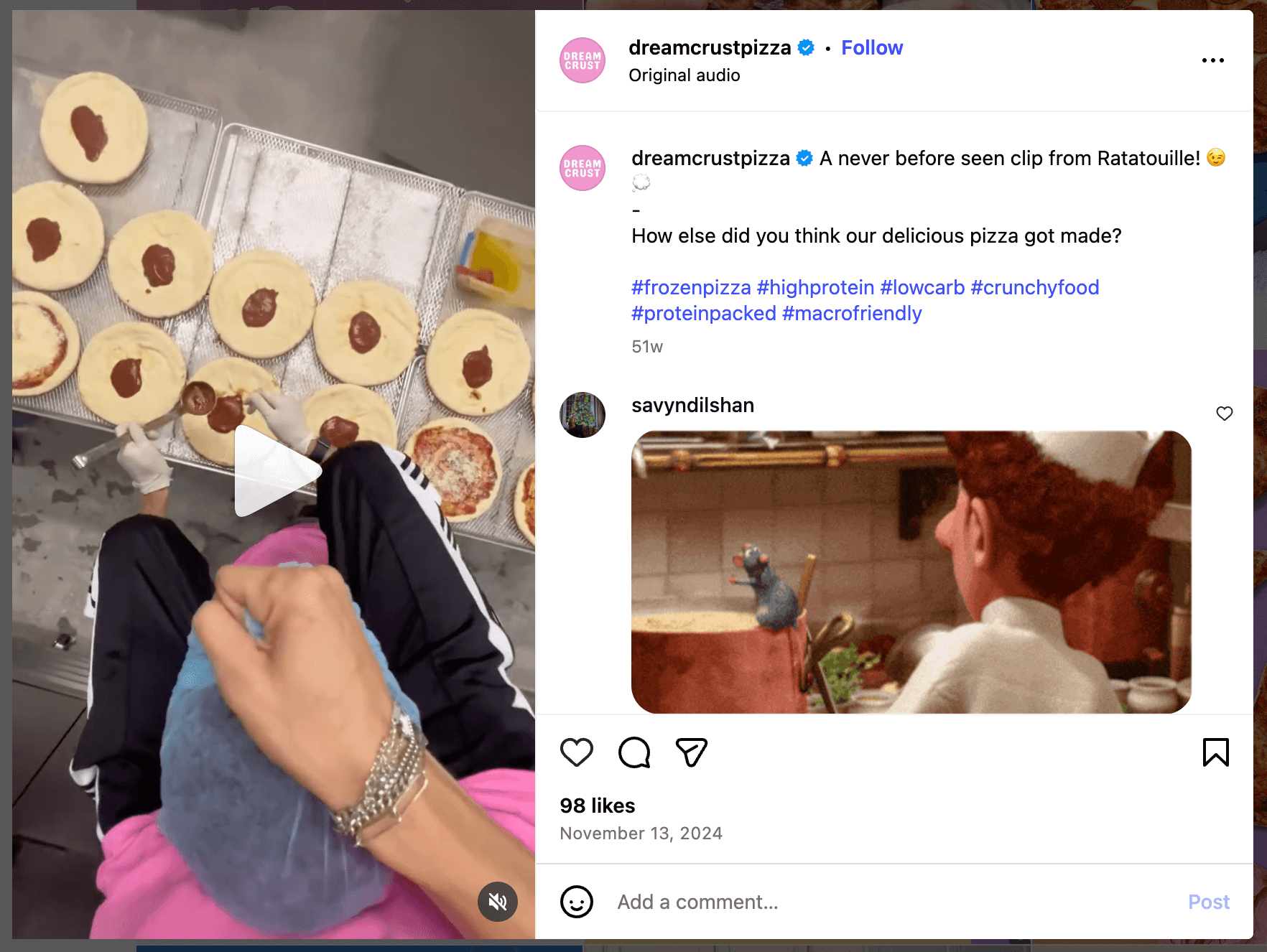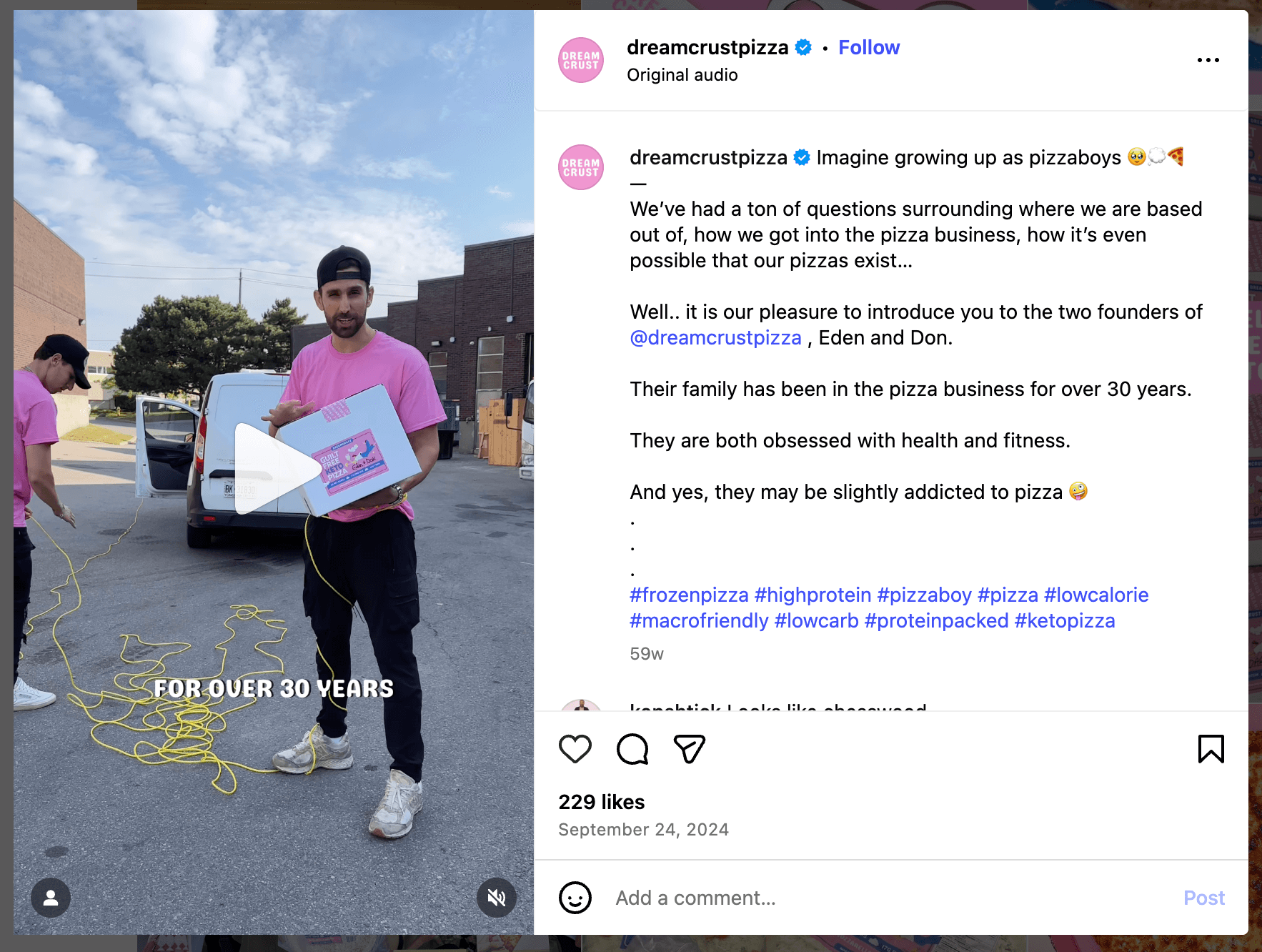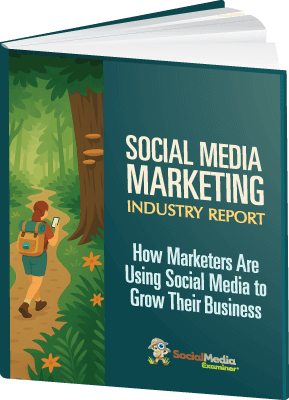Are you struggling to make your video content stand out on social media? Wondering how to stop people from scrolling past your posts?
In this article, you'll discover the specific techniques content strategists use to create short-form video content that captures attention and drives engagement.
Why Short-Form Video Matters for Marketers Today
Video has historically been king when it comes to content, but short-form video represents a new art form that pulls more emotion from viewers. It helps you communicate significantly more messaging in a very short time—something you can't achieve with static posts or carousels. Most importantly, it helps you show up authentically.
Through short-form video, Eden Hazan saved his family's pizza business and then built a new brand called The Reel Coach. He now works with brands worldwide to help them create content and develop content strategy.
The value in short-form video today is directly connected to your ability to tell stories that help you connect better with your audience.
#1: How to Find Short-Form Video Content Ideas
Before creating content, you need to understand what performs well in your niche.
On a weekly basis, find the top-performing content from competitors in your niche and build your content scripts based on five to ten ideas. Whether it's a topic or a hook style, the key is tailoring these ideas to your unique brand personality and core values.
If you continue this practice, it's only a matter of time before one of your videos takes off. When that happens, double down and triple down. Before you know it, you'll have found an essential piece of your strategy.
Ever wonder why top-performing creators show up time and again with the exact same hook?
They do this because it removes a barrier for their audience. When viewers see that a food nutritionist starts every video with “Here's how I infuse more protein into my lifestyle,” they know exactly what value they'll get from that creator every time they post.
Eventually, those viewers will fall into that creator's page and watch thirty other videos because they know what value exists in that content.
Pro Tip: What is your top-performing hook? Every brand should be able to answer this question. If you can't, you can't tell your stakeholders, influencers, or ambassadors what stops the scroll for your brand.
#2: How to Develop Scroll-Stopping Hooks for Short-Form Video
Research shows that short-form videos are watched for roughly two to three seconds, with an average retention time of about one and a half seconds. The reason is simple: when you're scrolling through Instagram in the morning, you give each piece of content a split second before deciding to scroll or watch.
Your hook gives viewers a reason to watch a little longer before scrolling to the next video.
There are five distinct hook elements that work together to stop the scroll. Each targets a different sense or aspect of how people consume content. The most effective short-form videos use multiple elements simultaneously to maximize attention capture.
Ready to Supercharge Your Marketing Strategy?

Get expert training and an unbeatable conference experience when you attend Social Media Marketing World—from your friends at Social Media Examiner.
Broaden your reach, skyrocket your engagement, and grow your sales. Become the marketing hero your company or clients need!
🔥 Save $800 on an All-Access ticket. Sale Ends Friday! 🔥
GET THE DETAILSVisual Hook
This is the primary visual viewers see in your content. Visual hooks include movement, transitions, interesting camera angles, or anything that makes your video visually distinct from the endless stream of content people scroll through.
Text Overlay
Think about driving on the highway. Most of us can't help reading billboards when we see them—it's human nature. You want to achieve the same thing on social media. If you're holding up a pizza and trying to communicate how amazing it is, the visual shows the pizza. But why not also add “Your new favorite pizza” at the top of the screen?
Caption
The next place your eyes go after seeing the text overlay is the caption. In the pizza example, the caption could say “Introducing the new 68-gram protein pizza.” Now you've communicated three pieces of information in three seconds: the visual shows how amazing the pizza looks, the text overlay says it's your new favorite pizza, and the caption reveals it contains 68 grams of protein. You can see the ripple effect happening.
Voiceover
Narrations work very well when layered over on-screen action. You're seeing the pizza, reading the text overlay, reading the caption, and simultaneously hearing a voice say something like “I can't believe I just found this game-changing pizza.” You're immersing your audience's senses—they're seeing it and hearing it.
Eden used to speak the hook while showing his face on camera, but now he shoots himself without his lips moving. This gives him the opportunity to test different voiceovers and verbal hooks over the same visual footage.
Audio
The fifth hook is a bonus element: adding a song in the background to strengthen the viewer's experience. Eden likes to pick songs with lyrics that tie into his communication strategy.
#3: How to Use Transitions in Short-Form Video
A transition is a technique used to smoothly move from one shot to another scene. You'll see this technique used frequently on YouTube, TikTok, Instagram, and even in television shows and Netflix content.
Transitions serve important purposes.
First, transitions demonstrate creativity. Showing different colored coffee mugs in a line is fine, but using transitions between each mug is much more noteworthy.
Second, transitions play perfectly with modern algorithms. They persuade your audience to watch to the end of your content and possibly rewatch it to see how you did the transition. This favorably signals the algorithm, which pushes your content to more people.
Once you understand how transitions work, you'll see how easy it becomes to get creative and stitch scenes together. The key is finding the right balance.
For a 30- to 60-second video, one to five transitions work well. Don't overdo it. But if you only had to pick one spot for a transition, it would be in your hook. Eden puts a transition in every hook because it doesn't matter how much value exists in the video if he can't get viewers to stop scrolling and pay attention long enough to let him speak.
Blackout Transitions
The easiest transition to learn is the blackout transition. Create the necessary effect by covering the lens with your hand or any object before revealing the new scene.
For example, in the first clip, record a selfie holding a coffee cup and say, “I'm going on a trip.” After speaking to the camera, push your coffee cup into the lens so the clip goes dark. Later, put your phone in the same position and start with your drink covering the lens. Then pull back to show the new location and continue your video.
AI Is No Longer Optional for Marketers—Ready to Master It?

Join over a thousand forward-thinking marketers at AI Business World—a conference-in-a-conference at Social Media Marketing World.
Get two days of practical AI training where you'll discover:
✅ Systems that 3x your output—leaving time for strategy and creativity
✅ Proven strategies you can deploy right away—no guesswork, no wasted budget
Become the indispensable AI expert your company needs.
GET YOUR TICKETS—SAVE $300Upload these clips to your editing app and combine them at the blackout points to create a seamless transition from one clip to the next.
Movement Transitions
Imagine you're at a park and want to transition to being at a coffee shop.
At the park, film yourself spinning around. As you spin, the background blurs. At the coffee shop, start your next clip with the exact same spinning motion. When you stitch these clips together at the point where both spins match up, you create the illusion that you spun from one location to another.
The movement doesn't have to be a spin, though. You could shake the phone up and down, do a quick pan left to right, or zoom in dramatically—any consistent motion will work. The key is performing the exact same movement at the end of one clip and the beginning of the next.
#4: How to Apply the Three Ps for Engaging Short-Form Video Content
The Three Ps are three tactics Eden keeps top of mind when brainstorming, filming, and editing content.
Perspective
This concept is simple but effective. Close your eyes and imagine yourself scrolling through your phone on any platform. Most content is filmed from an eye-level perspective because people hold their phones up while standing or sitting and shoot straight ahead. As a viewer, you see a lot of content from eye level.
But if you tape your phone to the ceiling, viewers watch as if they're a fly on the wall. If you put the phone on the ground, they feel like someone is standing over them, which creates a different emotional response.

Changing perspective makes your video feel different than 90% of the content viewers have just scrolled past, so they stop and pay attention.
Pro Tip: There are many ways to change perspective. The next time a video's perspective makes you stop, save it in a folder for future inspiration.
Props
A prop is any inanimate object you can use in your videos to add visual interest, tell your story better, or demonstrate what you're talking about. Props are particularly powerful because they give viewers something to look at beyond your talking head.
When planning content, think about what objects could help visualize what you're explaining. If you're talking about productivity, show a planner or timer. If you're discussing food, show the actual ingredients or finished dish. Props make abstract concepts concrete and give viewers multiple focal points, which helps maintain attention throughout the video.
Props are also excellent for creating B-roll footage. Instead of just filming yourself talking, you can film shots of you interacting with relevant objects. These clips can then be layered over your narration during editing, creating a more dynamic and professional-looking final product.
Pope in the Pool
This is a storytelling technique used to convey necessary but potentially boring information in an engaging way.
The Pope in the Pool method works because it acknowledges a fundamental truth about human attention: people can process visual and auditory information simultaneously. While they listen to what you're saying, their eyes scan the frame for interesting details. By intentionally placing compelling visual elements in your video, you give viewers more reasons to keep watching rather than scrolling to the next piece of content.
Imagine introducing an iPhone by sitting in front of a black wall and saying, “Hey guys, introducing the new iPhone, it's got A, B, C, D features.” You've already lost your audience. But if there's a team of people in a factory in the background with interesting machinery operating, that background activity retains them so they hear what you have to say.
Eden used this technique in one of the first videos he made to introduce himself as the founder of Dream Crust Pizza. At the time, there was a trend where people tied ropes to themselves. The viewer could see the rope attached to the speaker’s waist and connected to a truck or bike in the background.

The gimmick was that the rope was cut, and nothing happened. But what did that technique accomplish? Something in the background made viewers hang around and digest the whole piece of content. That's the Pope in the Pool method in action.
Eden Hazan is a content strategist who specializes in short-form video and is the co-founder of Social Drop, a social media and content agency that specializes in the food sector. Explore his courses at The Reel Coach. Follow him on Instagram.
Other Notes From This Episode
- Connect with Michael Stelzner @Stelzner on Instagram and @Mike_Stelzner on X.
- Watch this interview and other exclusive content from Social Media Examiner on YouTube.
Listen to the Podcast Now
This article is sourced from the Social Media Marketing Podcast, a top marketing podcast. Listen or subscribe below.
Where to subscribe: Apple Podcasts | Spotify | YouTube Music | YouTube | Amazon Music | RSS
✋🏽 If you enjoyed this episode of the Social Media Marketing podcast, please head over to Apple Podcasts, leave a rating, write a review, and subscribe.
Stay Up-to-Date: Get New Marketing Articles Delivered to You!
Don't miss out on upcoming social media marketing insights and strategies! Sign up to receive notifications when we publish new articles on Social Media Examiner. Our expertly crafted content will help you stay ahead of the curve and drive results for your business. Click the link below to sign up now and receive our annual report!

Want to Unlock AI Marketing Breakthroughs?
If you’re like most of us, you are trying to figure out how to use AI in your marketing. Here's the solution: The AI Business Society—from your friends at Social Media Examiner.The AI Business Society is the place to discover how to apply AI in your work. When you join, you'll boost your productivity, unlock your creativity, and make connections with other marketers on a similar journey.
I'M READY TO BECOME AN AI-POWERED MARKETER
